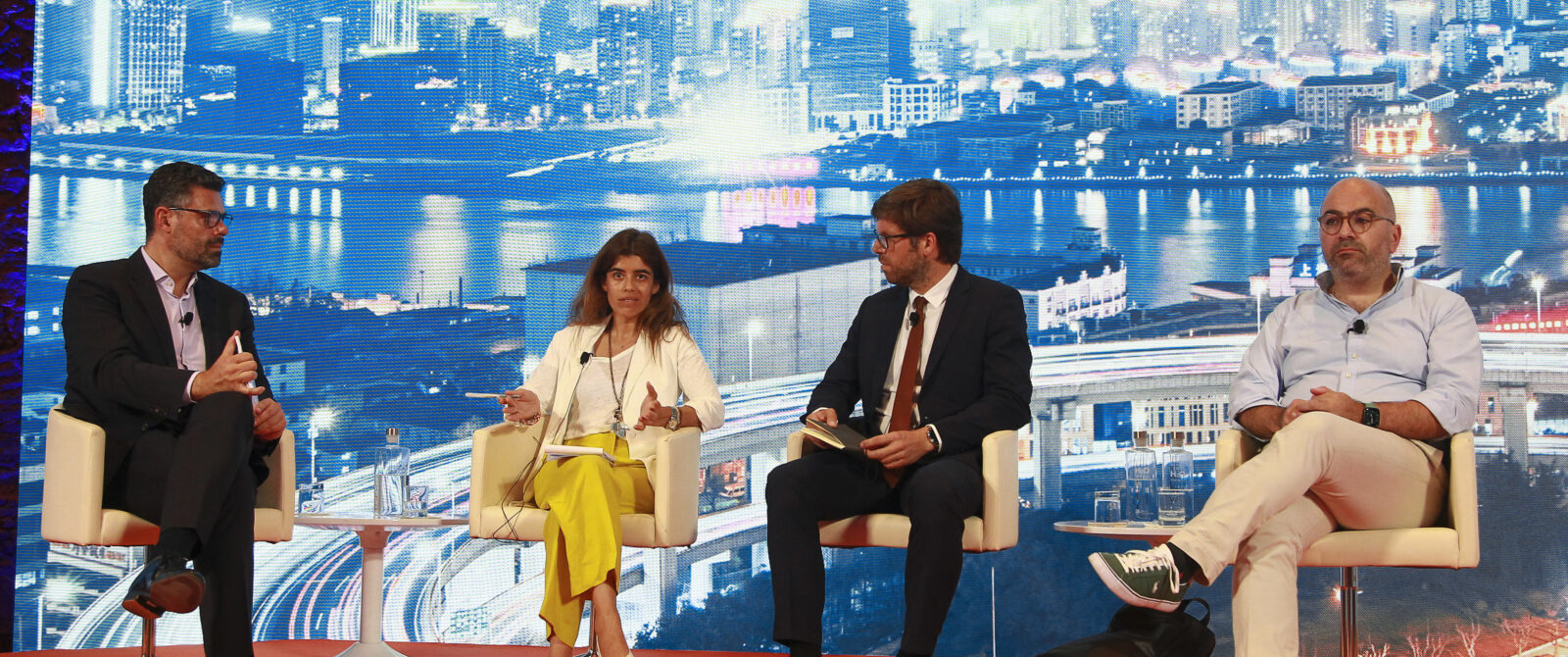Biggest challenge is getting people to change their mobility behaviour
Lisbon wants to reduce private car use by 12%. Cascais has invested in new buses which are now free to use, but even so use of public transport has risen by just 10%. Matosinhos is struggling against a public transport support network which is patchy.
Any discussion of the challenges of mobility in Lisbon necessitates extending the geographical area outside the city, to encompass the metropolitan area. According to Francisca Ramalhosa, the Head of Lisbon’s Mobility Directorate, this is a real challenge, since this area includes several municipalities, operators and bodies.
During the “New sustainable mobility in smart cities” panel discussion, she identified a further challenge – changing the modal share. Lisbon currently has 46% private vehicle use, which needs to change if the aim is sustainability and emission reduction. “The target is to cut this use in Lisbon by 12% by 2030, in other words, to get it down to 34%.” This figure might not seem like much, but it entails investing heavily in a transport system which is sustainable, safe and reliable. “Lisbon has been investing in Carris, purchasing new buses, creating more bus lanes, improving service and expanding the network.” Another investment has been in promoting what has been termed smooth mobility, a concept which has already become part of the vocabulary in cities. “In terms of bicycles, we have invested not only in infrastructure, in other words the cycle network, but also in a bike share system which has been very successful and has grown a great deal.” There are now around 1,600 bicycles, distributed among 143 active stations.
Behaviour needs to change urgently
For Cascais, the biggest challenge is “behaviour change.” So says Miguel Pinto Luz, the deputy mayor of Cascais. “We made an effort, we have a completely new transport network, 100 buses with zero kilometres on the clock, free wi-fi, mobile phone charging points, on-board CCTV… Public transport in Cascais is completely free of charge, but the reality is that demand has only risen by 10%.”
He insists that supply was “dramatically increased,” with double the number of kilometres driven – now at around seven million – but uptake has been relatively low. “In order to do anything in terms of demand, I think the biggest challenge is politics. Policy-makers are only in office for four years, and they are generally afraid of making decisions. I freely admit I include myself in that.” Miguel Pinto Luz is convinced that they are often difficult decisions, such as discouraging individual car use, incentivising the use of public transport… “Difficult decisions, but they have to be made. Full stop.”
Indeed, the deputy mayor argues that councils are now working together as a network, and that the “Lisbon Metropolitan Area has a system which works in synergy, and councils communicate with each other, regardless of their choices. Councils are doing everything they can, as are operators. Now we need collectively to be brave enough to make clear and objective decisions to cut the use of individual transport. It’s hard, but we have to do it.”
Young people to promote the message
Carlos Manuel Amorim da Mouta, the deputy mayor of Matosinhos, also regards behaviour change as the biggest challenge, although his city is very different from the scenario on Cascais as described by Miguel Pinto Luz. The public transport support network in Matosinhos is not uniform throughout the area covered, and not all of the stops have covered shelters. “Despite all the support we provide, the fares are still a problem for many families.”
He is therefore focusing on cultivating a range of lifestyle habits, as happened with the issue of recycling and safety. “While youngsters aren’t purchasing electric vehicles, they are very much promoting the idea of saving the planet, sustainable development… and we need to harness that enthusiasm. There’s still a lot of work to be done before we get into more technical issues.”
Amorim da Mouta also mentioned the new urbanism, and explained that Matosinhos is practically fully consolidated, with work now commencing on pre-existing streets. “There are few zones in the whole area which are a blank canvas. Some streets have pavements that are just 20 centimetres wide. That’s not even acceptable for people to go anywhere on foot, never mind installing a cycle or bus lane.” This is the difficulty facing policy-makers in this city – reconciling the built heritage and what the local government believes to be the future of cities.











